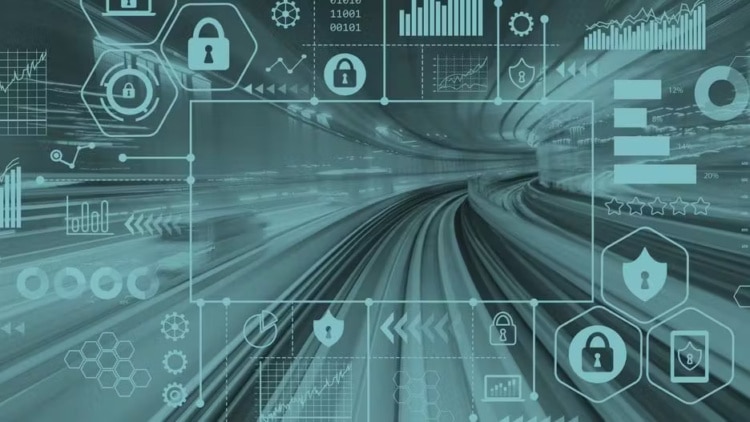I stand before you today, my dear reader, on a quest to unpack an intricate, compelling concept that is reshaping our world: the role of datafication in predictive analytics. This labyrinthine concept might seem daunting at first, but don’t fret – we are in this together. I assure you that, as we delve into this, you will find yourself captivated by the transformative power of datafication and how it fuels predictive analytics.
Understanding Datafication
First and foremost, it’s essential to get to the heart of what ‘datafication‘ really means. This relatively new term describes the process of converting everyday actions and processes into quantifiable data. Whether you’re browsing social media, making an online purchase, or even adjusting your smart thermostat, you’re playing your part in datafication. In essence, datafication turns the invisible into the visible, transforming raw, unstructured information into a structured, machine-readable format.
Consider a simple but profound example of datafication: each time we use a fitness tracker to record our daily steps, we’re not just counting numbers – we’re quantifying our health habits and contributing to a larger pool of data that can offer insights into population-wide health trends.
Decoding Predictive Analytics
Next on our journey is predictive analytics – a sophisticated, forward-looking approach that uses historical and current data to predict future events. We could see predictive analytics as a fortune teller with a data-powered crystal ball. But instead of hazy visions, this crystal ball draws on statistical algorithms, machine learning, and artificial intelligence to forecast outcomes. From finance to healthcare, marketing to logistics, predictive analytics is transforming decision-making processes, shaping future strategies, and enhancing operational efficiency.
For a technical example, let’s talk about credit scoring. Financial institutions utilize predictive analytics to determine the creditworthiness of individuals. By examining past behaviors, like payment history, and combining this with socioeconomic data, institutions can predict future loan repayment probabilities. Thus, predictive analytics makes risk management more precise, enabling smarter decision-making.
Datafication Fuels Predictive Analytics
The paths of datafication and predictive analytics converge beautifully, one fueling the other. Every ‘like’ on Facebook, every product added to an online shopping cart, every online search – all of these data points feed the hungry beast of predictive analytics, powering its ability to foresee, plan, and strategize. Without datafication, predictive analytics would be akin to a car without fuel.
Here, let’s dive into a more technical example. Say, an e-commerce platform wants to recommend products to its customers. For this, they rely on a machine learning model that needs training data. With datafication, each customer interaction, whether viewing a product or making a purchase, turns into a data point. These data points then train the machine learning model, which predicts and recommends products that a customer is likely to buy next.
from sklearn.ensemble import RandomForestRegressor # Assume `df` is a dataframe with 'customer_interaction' and 'product_bought' as columns X = df['customer_interaction'].values y = df['product_bought'].values # Instantiate and fit a Random Forest model model = RandomForestRegressor(n_estimators=100, random_state=42) model.fit(X, y) # Now we can predict the next product to be bought next_product = model.predict(new_customer_interaction)
Challenges and Ethical Considerations
Despite its promises, the intertwining of datafication and predictive analytics brings forth certain challenges and ethical considerations. Privacy concerns, data security, and the risk of reinforcing existing biases in predictive models are noteworthy. As we move forward in this data-driven era, it’s crucial that we address these issues, ensuring that the power of predictive analytics is harnessed responsibly.
Future of Datafication in Predictive Analytics
As we glance towards the horizon, it’s fascinating to envision the future possibilities that the union of datafication and predictive analytics holds. A future where decision-making is not only informed but empowered by data-driven foresight, where uncertainty is minimized, and opportunities are recognized even before they become apparent.
One exciting development lies in the realm of real-time analytics. As technology progresses and our ability to process data in real time improves, so too does the potential of predictive analytics. Imagine a world where decisions aren’t just made based on what happened in the past or what’s happening now, but are continuously informed by real-time data, adjusting and adapting as circumstances evolve. This is the promise of real-time predictive analytics.
Consider the evolution of autonomous vehicles. These marvels of technology rely on real-time predictive analytics to operate. Sensors on the vehicle are constantly collecting data about the surrounding environment and the car’s operations. This data is immediately processed and used to predict necessary actions, such as braking to avoid an obstacle. As more data is collected and processed in real time, these predictions become increasingly accurate and reliable, improving safety and performance.
Final thoughts
In the grand scheme of things, datafication and predictive analytics are not just about numbers or technology – they’re about us, our behaviors, and how these can be harnessed to shape a better future. With the potential to reshape industries and redefine how we make decisions, the coupling of datafication with predictive analytics is a force to be reckoned with. As we forge ahead into the future, the role of datafication in predictive analytics is poised to grow, ushering in an era of unprecedented foresight and strategic planning.






